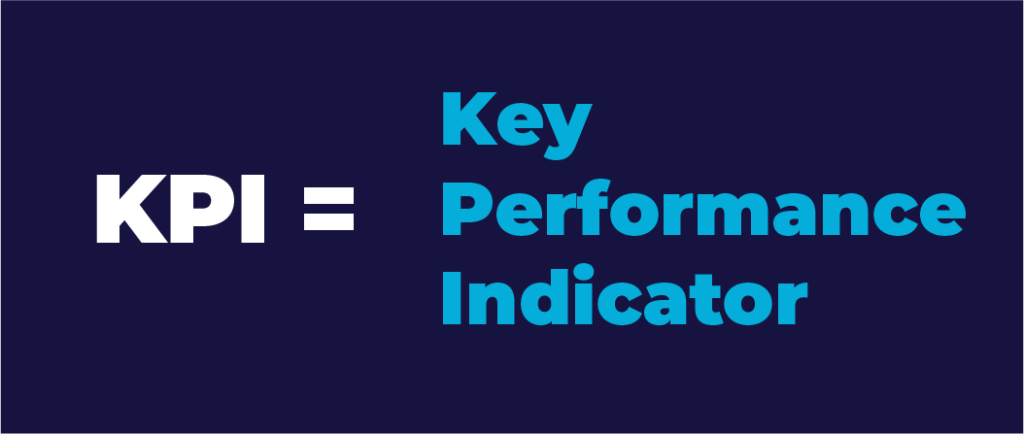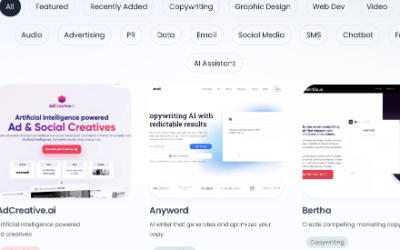You’ve been putting effort into your B2B marketing strategy, and now you’re wondering if it’s working. You know you should be tracking metrics, but there’s so much data. What should you focus on?
Unlike most other articles on this topic, we won’t prescribe you a long list of KPIs you MUST follow.
KPIs aren’t one-size-fits-all, and what works best for one business may not be right for you.
So we’ll explain how to decide the most important marketing KPIs to track based on your company’s specific strategy. That way, you can get the insights you need without any other noise.
Before we get into it, let’s make sure we’re on the same page:
What is a KPI?
KPI stands for key performance indicator.

A performance indicator is a metric that shows you how your business is performing. For example, the number of customers you’re gaining every month is a performance indicator (and a very important one!).
A KPI, then, is any performance indicator your business chooses to focus on as a key measure of how you’re doing overall.
You may have tons of metrics that show you how your company, employees, and products are doing.
But KPIs are the shortlist, the all-stars among your metrics that you set goals for and look at on a regular basis. They’re how you measure your success.
Now, we said we wouldn’t give you a prescription for the exact KPIs you need to track. But a select few should be important for any business looking to stay competitive.
The Most Important KPIs to Track For Every Business
At the end of the day, these 3 metrics should matter to your business because they directly affect your bottom line:
- Revenue
- Customer Acquisition Cost (the entire cost of marketing for a certain period, divided by the number of customers gained during that period)
- Cost Per Lead (the entire cost of marketing for a certain period, divided by the number of leads generated during that period)

Every business needs to generate leads, every business needs to gain customers, and every business needs revenue. (That’s the point of marketing, anyway.)
So these—revenue, CAC, and CPL—are your basic 3 that we recommend you start tracking right away.
From there, it’s up to you (and the marketing strategy you follow). Here’s how to decide what matters:
Determining the Right KPIs For Your Business
When done correctly, your KPIs will give you a clear picture of how your prospects move from not knowing anything about you to becoming interested in your business to finally deciding to become a customer.
So to help you decide your KPIs, we’ll break the process down into stages:
Discovery: How are people finding you for the first time?

Whether your strategy focuses on ads, SEO, social media, or other channels, the first question you want to answer is: How are people finding you?
The KPIs that matter to you will depend on the channels you’re focusing on.
Here are some of the most popular options:
- Keyword Rankings – Which pages are showing up in organic search results, and how many people see them?
- Website Traffic – How many people are finding your website, and where are they coming from? What pages are they visiting? How long do they stay?
- Social Media Reach – How many people are you reaching with your social media content, whether paid or organic? Which content is reaching more people and why?
- Social Media Shares – How many people are sharing your content with others?
- Survey Results – If you can take a survey with new customers, asking them how they found you, what’s the most common answer?
- Ad Reach – How many people are seeing your ads?
- Click-Through Rate (CTR) – How many people are clicking on your ads?
- Cost Per Click (CPC) – How much are you paying per click on your ads?
- Frequency – How many times the same people are seeing your ads? This can indicate a too-small audience or the possibility that you’ve exhausted your current audience with your ads.
Lead Generation: How are you gaining leads?

After a new visitor has learned about your business and seen your content, they have the opportunity to become a lead. This is where they start to follow you in some way or consume more of your content in order to learn more from you.
Here are some metrics you could track, depending on your priorities:
- Ad Conversion Rate – If your ads are designed to generate leads, how many leads are being generated? (Number of leads generated / total clicks * 100)
- Opt-Ins – How many people opt into your mailing list when they visit your blog or website?
- Email Subscribers – How many people are subscribing to your list? How many people are unsubscribing? Which forms convert the best?
- Followers – How many followers are you gaining on social media platforms? How many followers are you losing?
- Cost Per Lead (mentioned above) – How much does it cost you to generate one lead? (Total cost of marketing for a certain period / number of leads generated in that period)
Nurturing: How are leads showing purchase intent?

After a person has decided to follow or subscribe to your content, they will either engage with it more and decide to become a customer or slowly fade away without purchasing. This process can be long or short, depending on the person.
The following metrics can help you see how well your audience is engaging with your content and how many leads are moving toward purchasing from you:
- Email Open Rate – How many subscribers continue to open and read your emails?
- Email Click Rate – How many people click on links inside emails? How many people are clicking on links that show purchase intent?
- Conversion-Focused Ad Click-Through Rate (CTR): How many people click on ads focused on sales, free trials, or product promotions?
- Social Media Engagement – How many comments, likes, shares, or saves are you getting?
- Product Page Visits – How many people are visiting product pages or other pages that demonstrate purchase intent?
- Demo / Trial Sign-Ups – How many free trial or demo sign-ups are you getting? How much does it cost you per sign-up? (Total marketing cost for a certain period divided by number of sign-ups for that period)
Conversion: How are leads converting into customers?

At this final stage, a lead with purchase intent takes the last step to buy from you and become a customer.
Here are some metrics that can help you track this:
- Conversion Rate (Per Channel) – How many email subscribers become customers? How many demo sign-ups become customers? How many product page visits turn into a sale?
- Return on Ad Spend (ROAS) – How much value is your advertising bringing into your business? (Total revenue generated from ads / total ad spend * 100)
- Customer Acquisition Cost (CAC, mentioned above) – How much money is it costing you to acquire one customer?
- Lifetime Value (LTV) – How much value does one customer typically bring into your business over the lifetime of your business relationship? (You can compare this to your CAC to see if the value you’re getting per customer is worth the cost of acquiring one.)
Many more metrics are out there, but these are the heavy hitters.
And as you search for KPIs to add to your marketing dashboard, you can use these 4 stages of marketing (Discovery, Lead Generation, Nurturing, and Conversion) to help you paint the full picture of your marketing strategy and the value it brings to your business.
Conclusion
Ultimately, the most important marketing KPIs to track for your business depend on your marketing strategy.
Generally, every business should be tracking these main 3 KPIs:
- Revenue
- Customer Acquisition Cost (CAC)
- Cost Per Lead (CPL)
But beyond that, the most important thing is that you have a clear picture of your businesses’ performance on these 4 fronts:
- Discovery: How are people finding your business?
- Lead Generation: How are you gaining leads?
- Nurturing: How are leads showing purchase intent?
- Conversion: How are leads converting into customers?
Next up, read this article to learn why B2B marketing can feel boring and how to make yours more interesting and effective.







